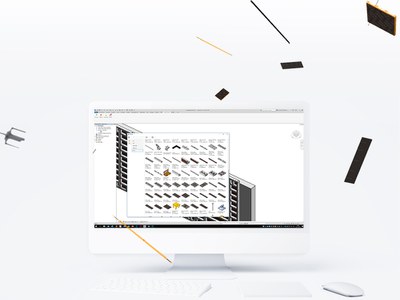ULMA Studio for Revit® Now Available
With this new tool, ULMA offers professionals in construction, architecture, or engineering, as well as teachers and students, the ability to download and utilize different families of ULMA products to make their work in Building Information Modelling (BIM) easier.
ULMA Studio users can design virtual models and generate material lists, plans, 3D images, animations, or information flows that can be integrated with construction project planning and management tools.
In this first version, the ULMA Studio Add-In for Revit® download includes the primary formwork systems for building projects. Among our wall and column or vertical formwork systems, the user be able to access libraries including ORMA Panel Formwork, LGW Lightweight Panel Formwork, and LGR Lightweight Column Formwork, as well as the formwork panels in imperial units designed for the US market, MEGALITE and MEGAFORM. From our horizontal or slab formwork systems, there will be access to the CC-4 Aluminium Modular Formwork and ENKOFLEX Timber Beam Slab Formwork families.
Given that one of the main objectives of BIM software is to combine all project information in a single location, ULMA Studio includes all relevant information about each piece, from the reference number to name and weight. Moreover, the user will be able to generate detailed material lists for the project underway, either for specific views or the entire project.
ULMA Studio will be a vivid and dynamic tool, updated as needed with new features and new products. It will soon include DORPA Frame Scaffolding and BRIO Modular Scaffolding as well.
This will not be the only feature that ULMA offers in its web services; true to its client-centred philosophy of close collaboration, it will continue developing different tools designed for the BIM environment, which is in growing demand across the construction industry.
Closeness and collaboration with the client, a fundamental need for the successful execution of any project, is a defining aspect of ULMA’s work ethic, based on the creation of collaborative environments for each project from start to finish, and fits perfectly with the work methods required by BIM.


